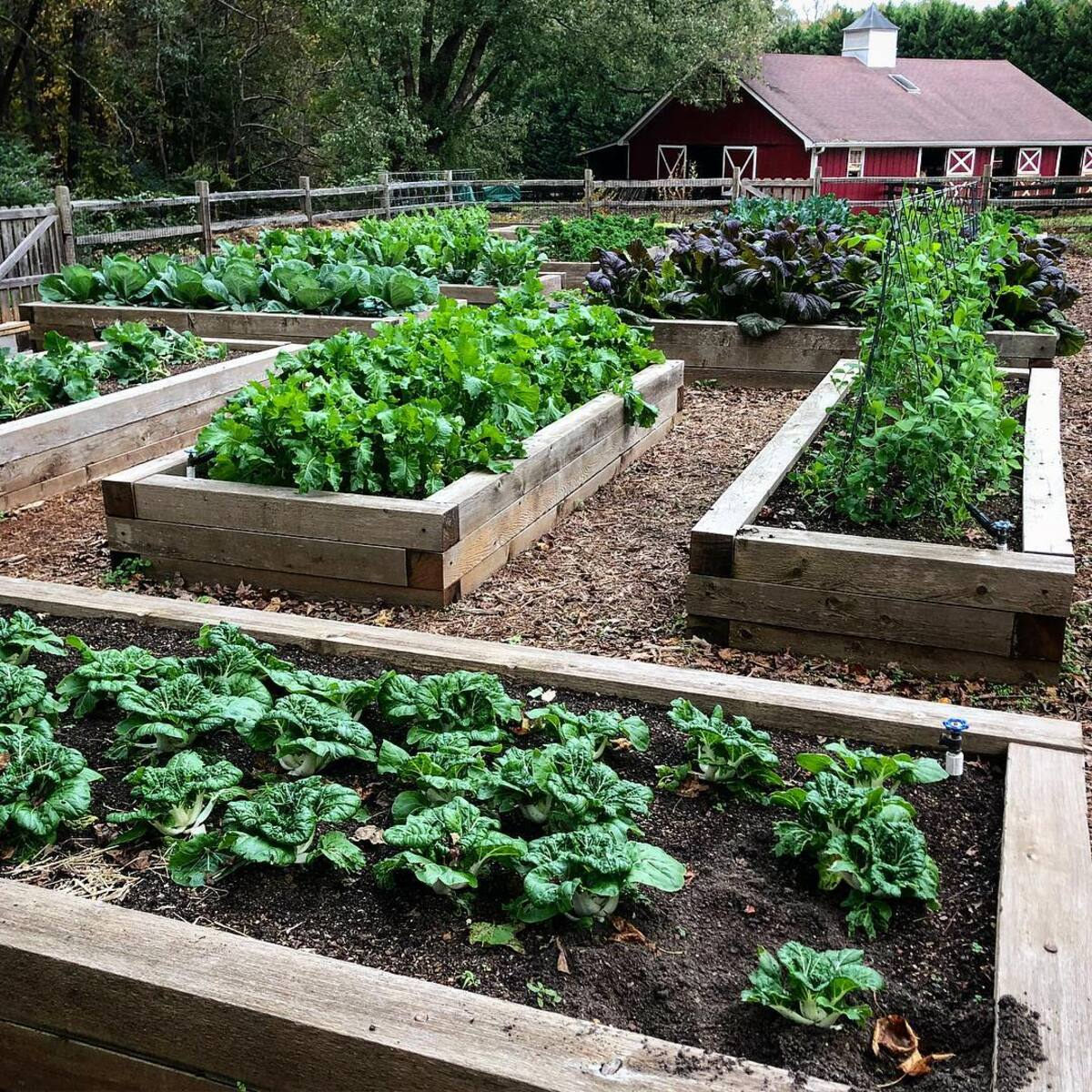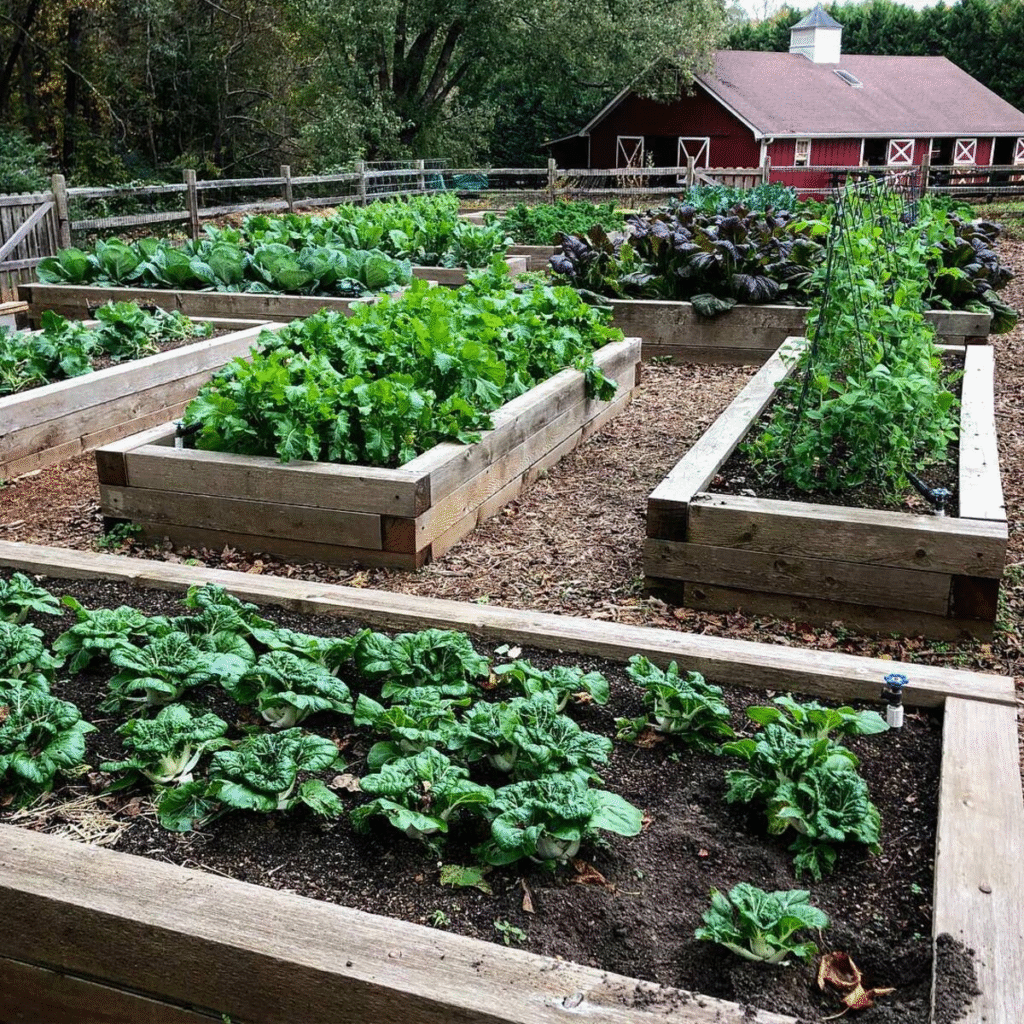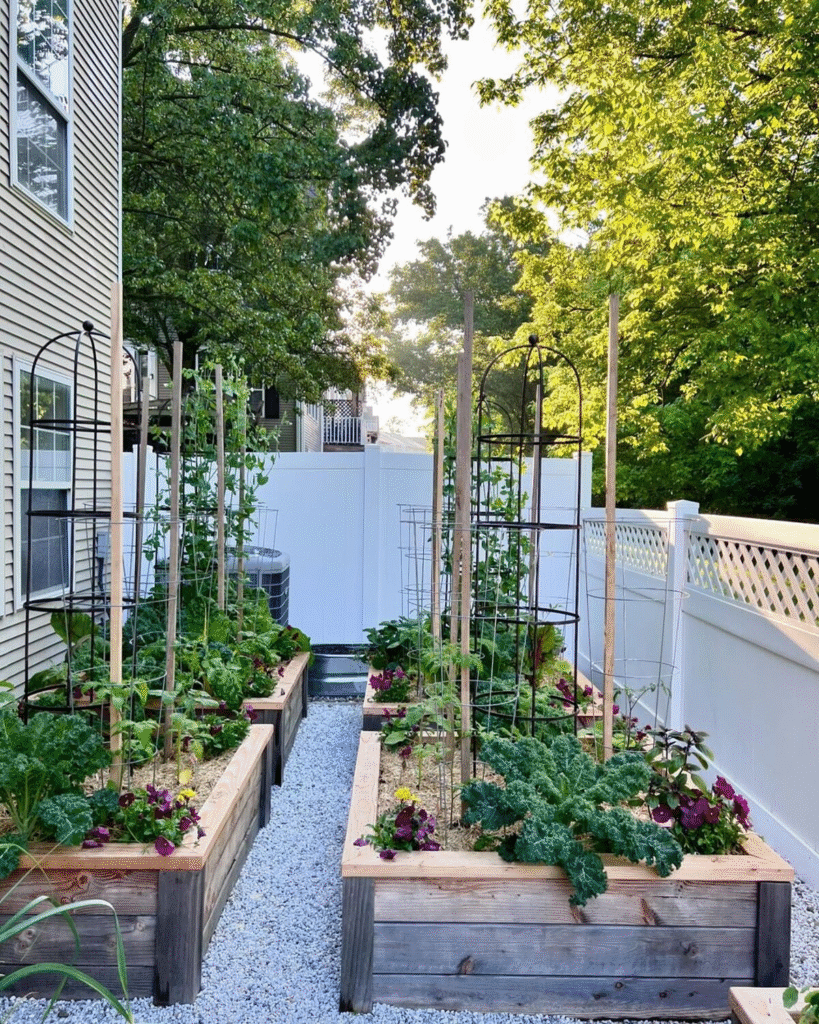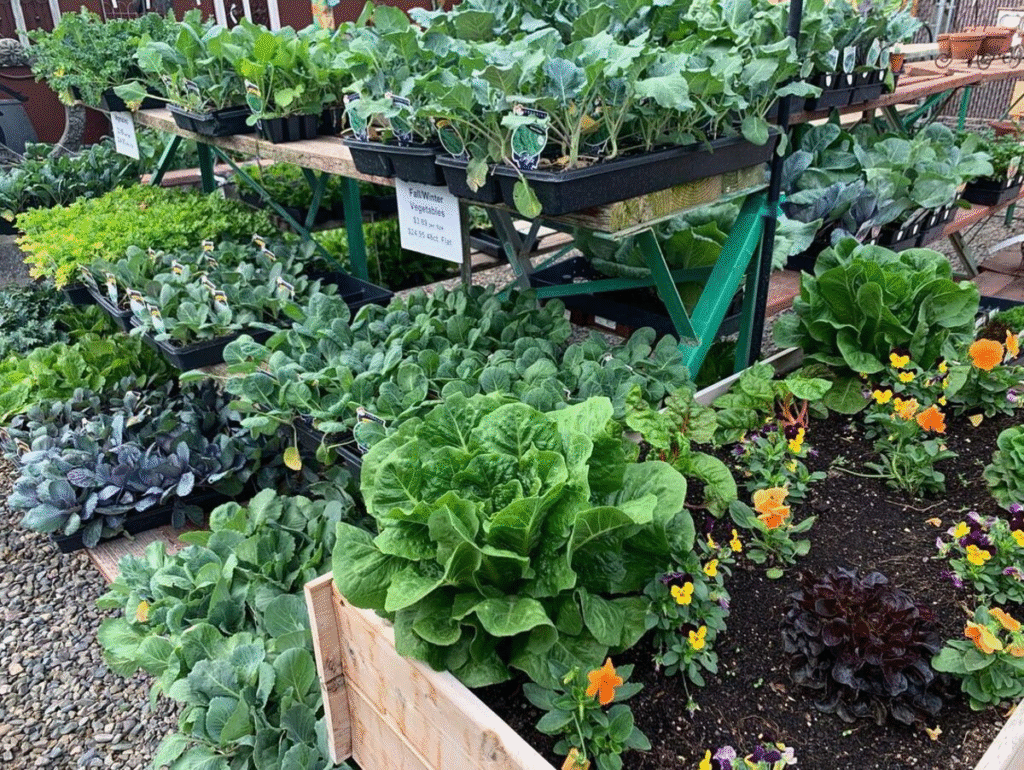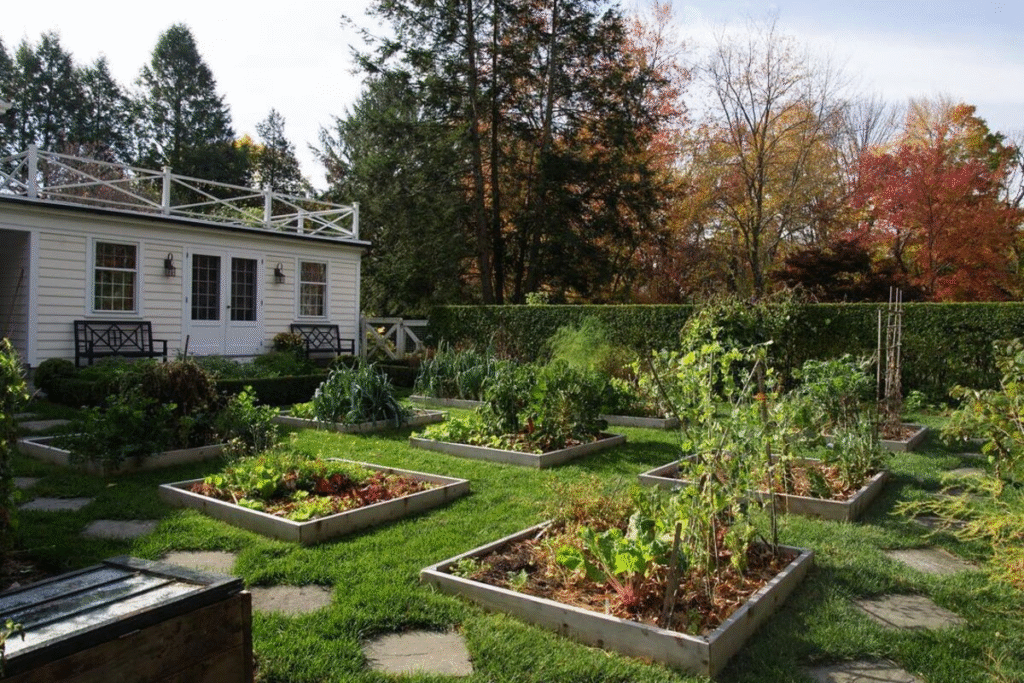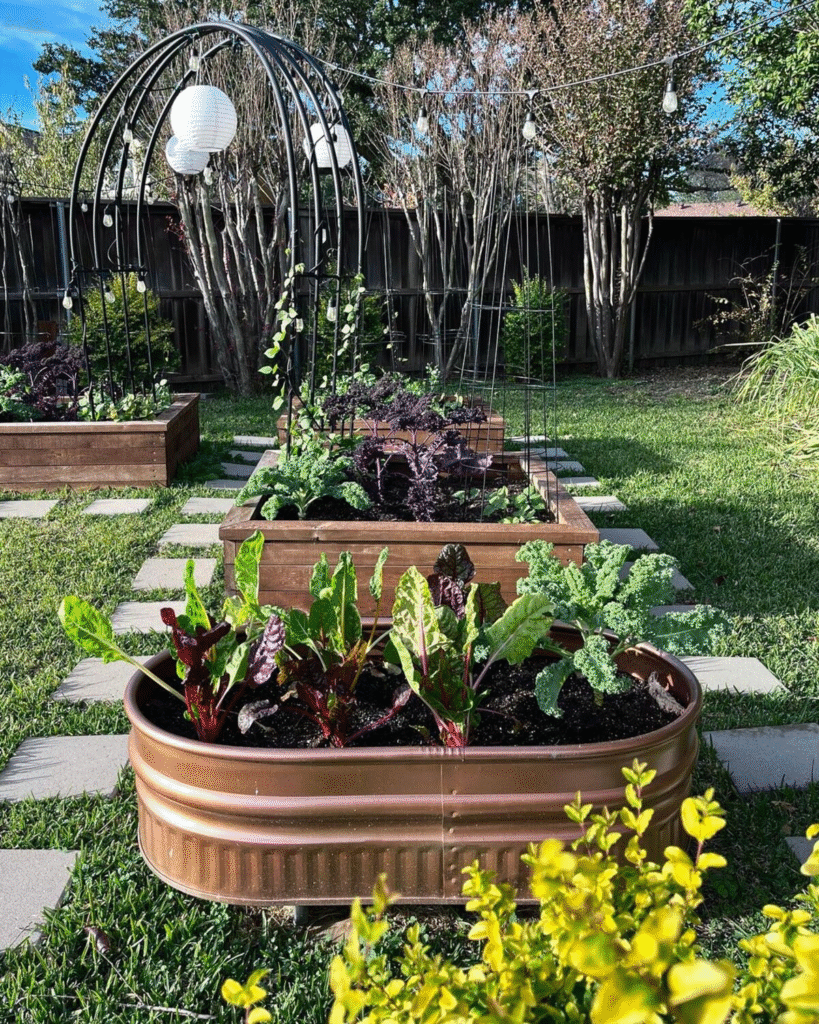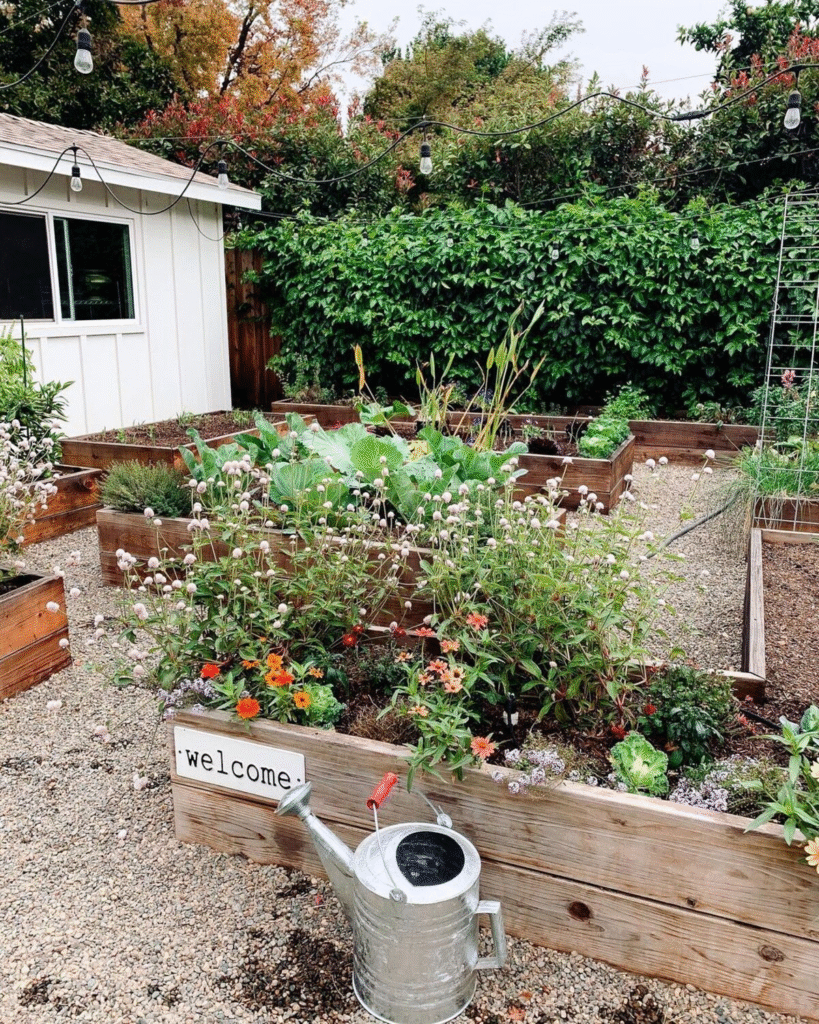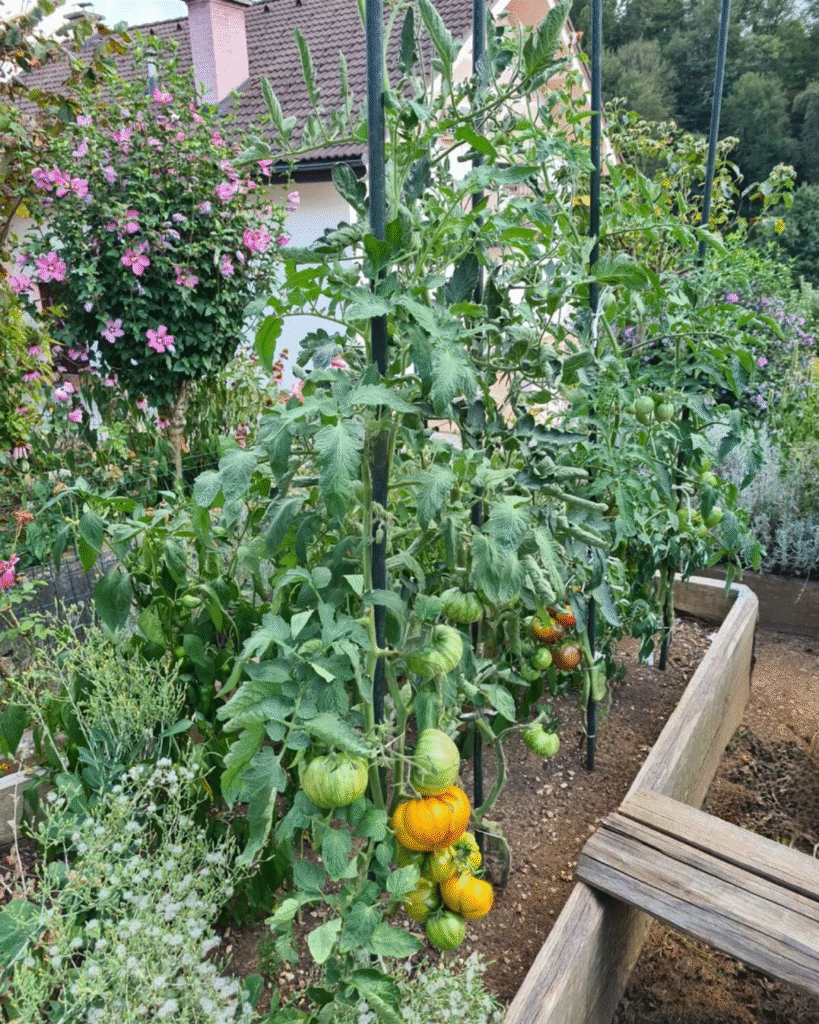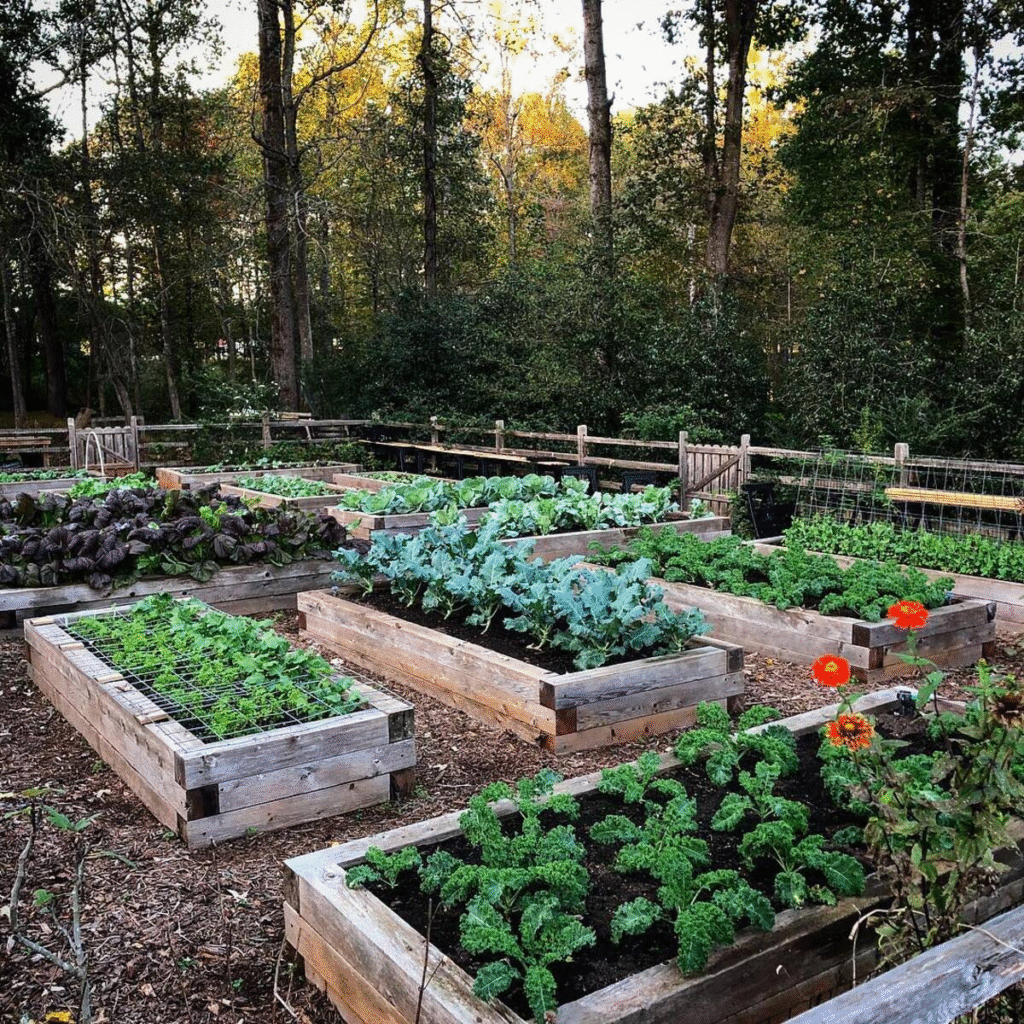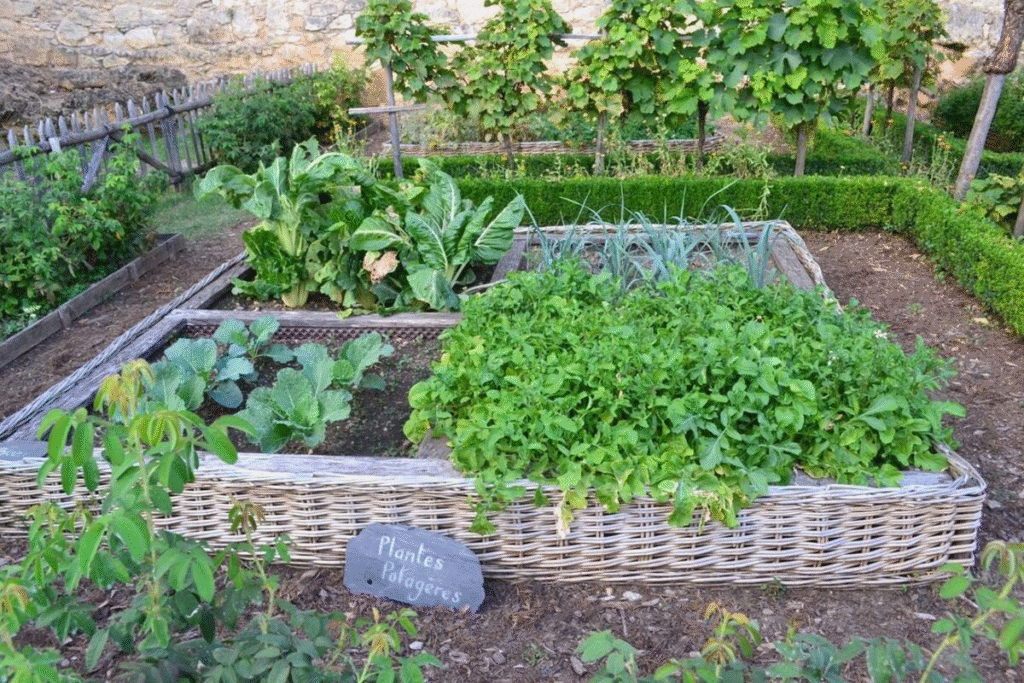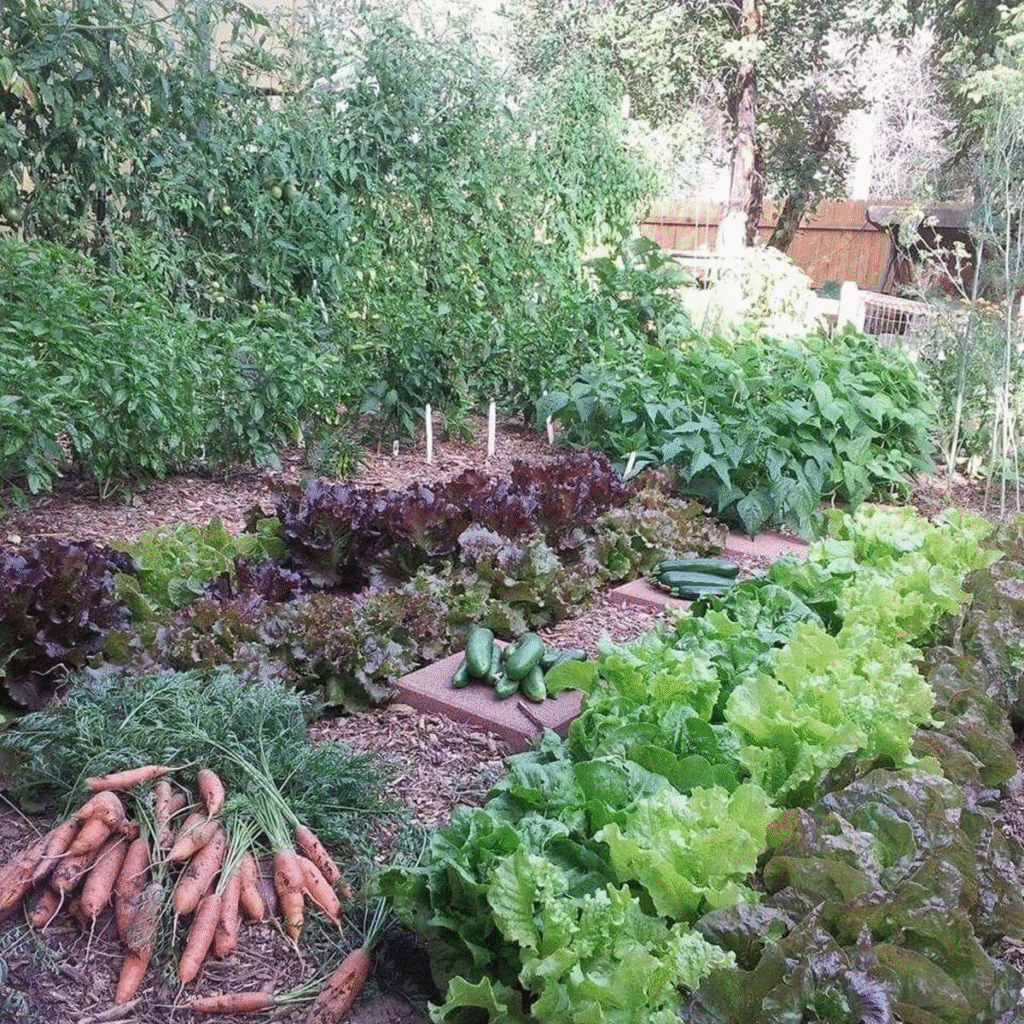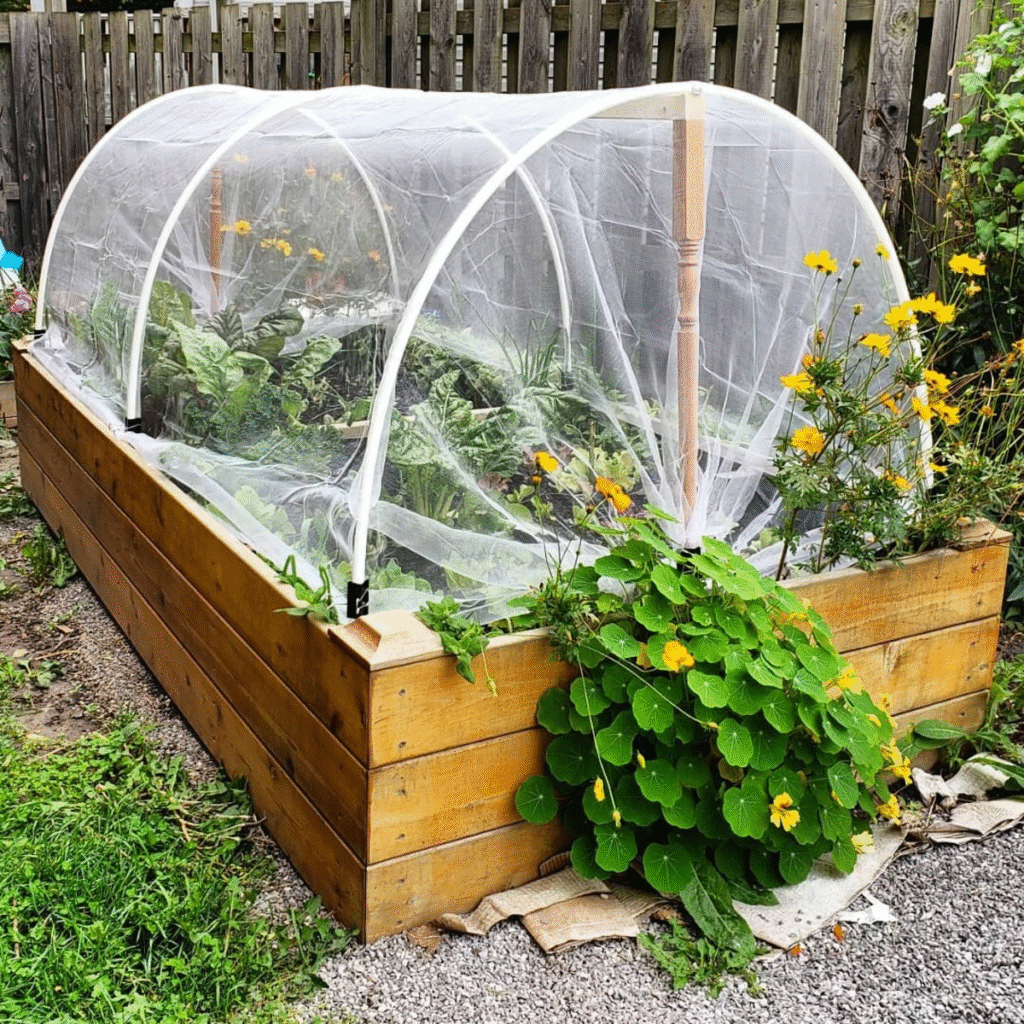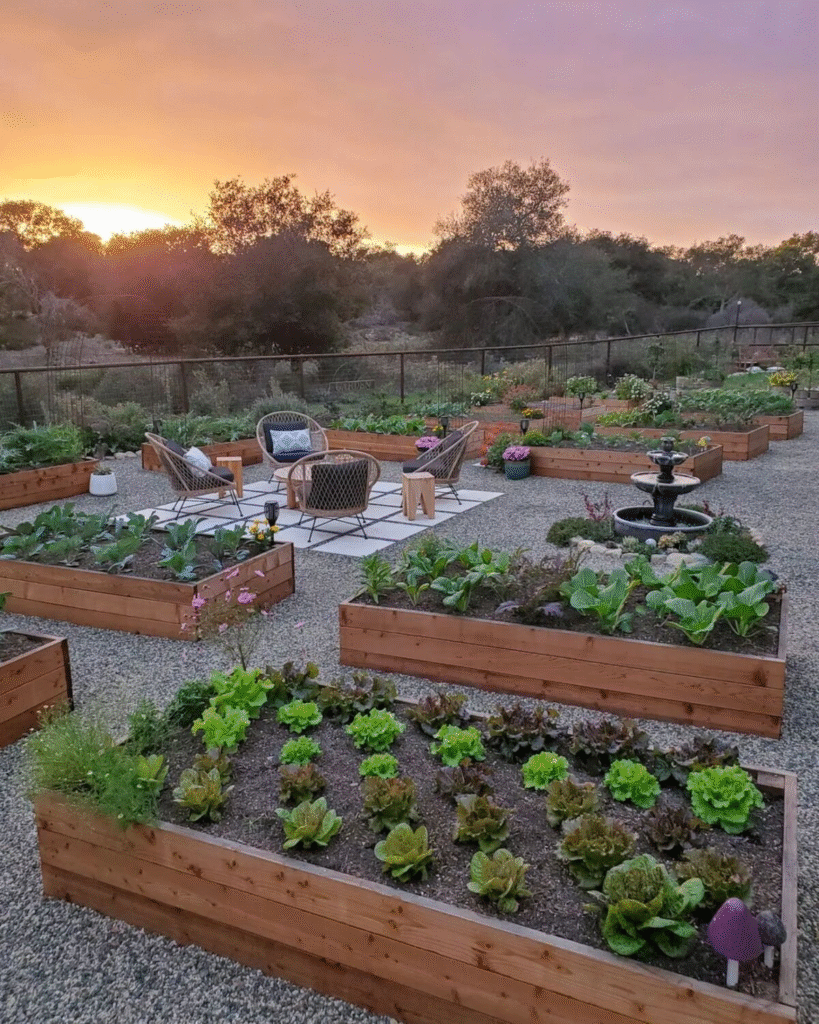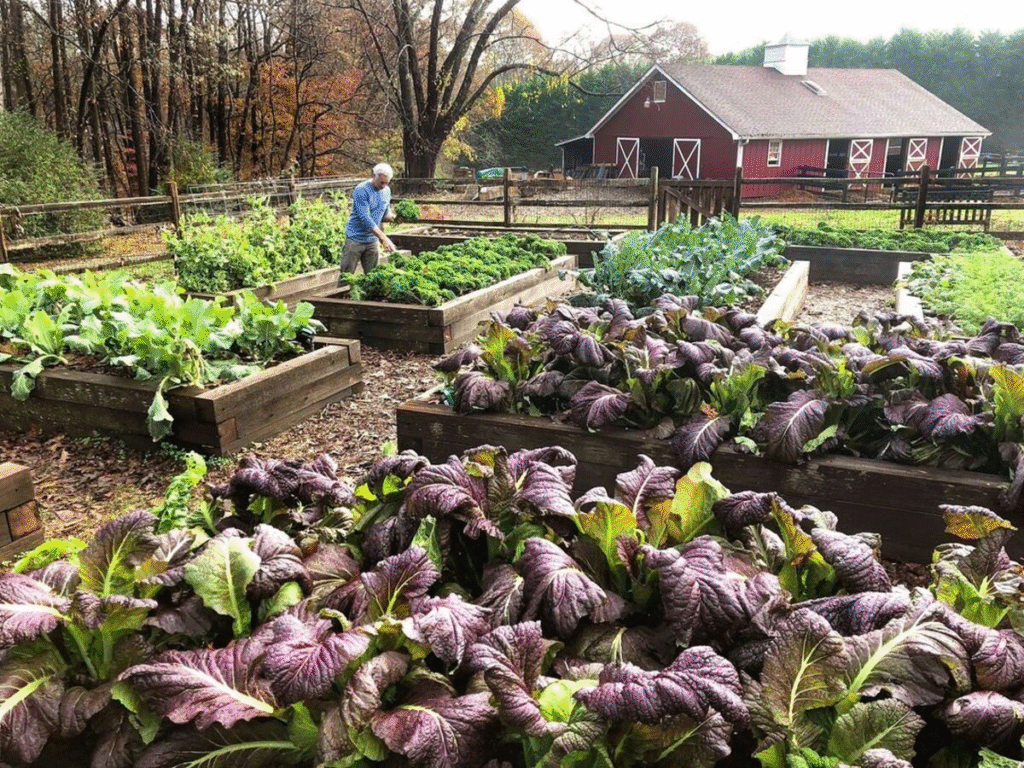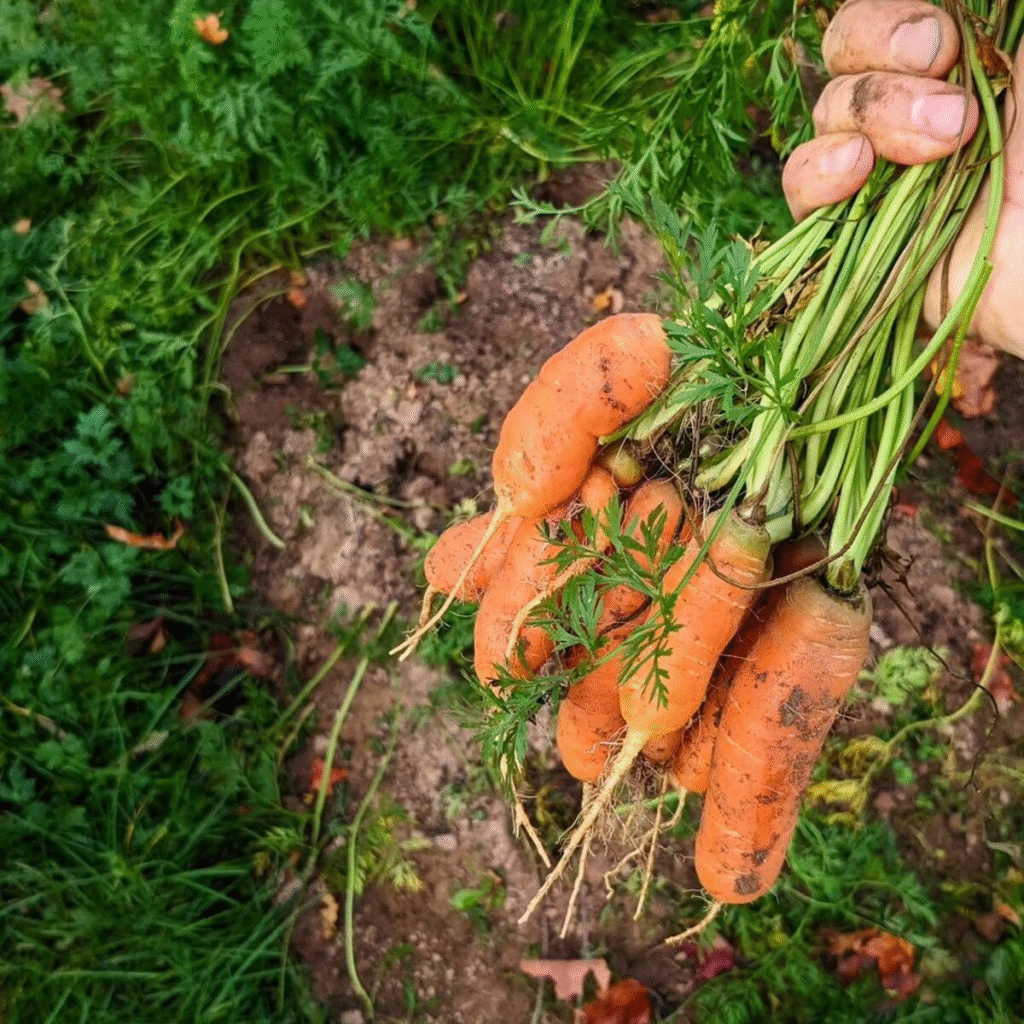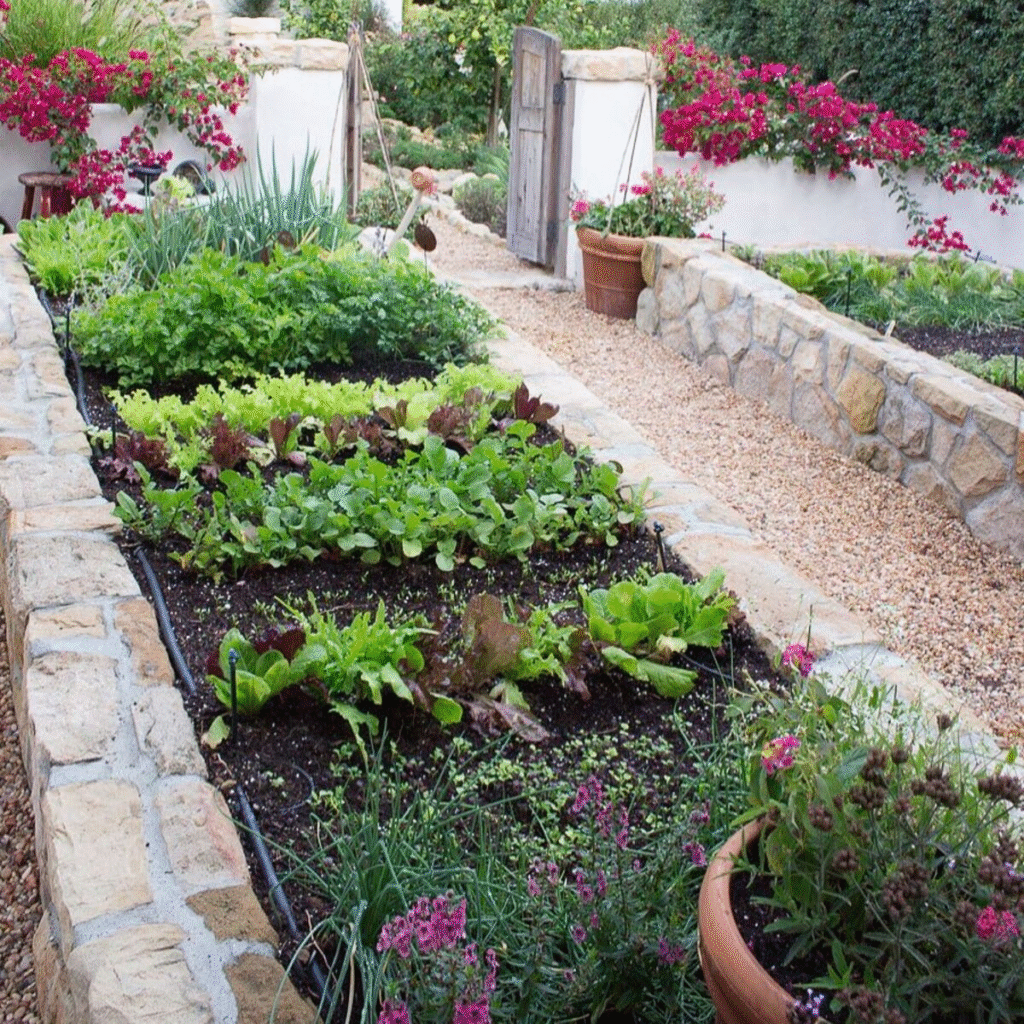20 Fall Vegetables Garden Ideas for a Bountiful Autumn Harvest
Fall doesn’t mean the end of gardening—it’s actually one of the best times to grow fresh crops. With the right planning, your space can thrive with 20 Fall Vegetables Garden Ideas that keep your harvest going long after summer fades.
Cooler temperatures make it easier to manage crops, while vibrant greens and rich root vegetables bring beauty and abundance to your garden. Whether you’re using raised beds, planters, or incorporating edibles into your landscape, fall offers endless opportunities.
In this guide, we’ll explore creative, practical, and inspiring ways to design a productive autumn garden that’s both beautiful and rewarding.
In this article, we'll cover
- 1. Try Raised Garden Beds
- 2. Grow a Potager Garden
- 3. Create a Tiered Garden
- 4. Use Planters
- 5. Incorporate It Into Your Landscape
- 6. Light It Up
- 7. Section It
- 8. Add a Trellis
- 9. Add Visual Interest with Leafy Greens
- 10. Divide and Conquer
- 11. Mix and Match
- 12. Use a Greenhouse
- 13. Making It Your Patio Feature
- 14. Fence It
- 15. In-Ground Beds
- 16. Incorporate an Irrigation System
- 17. Companion Planting with Herbs
- 18. Ornamental Vegetables for Fall Color
- 19. Small Space Fall Gardening
- 20. Cozy Harvest Corners with Fire Pits
- FAQs
- Conclusion
1. Try Raised Garden Beds
Raised garden beds are an excellent choice for fall planting because they offer better soil drainage and retain warmth for longer. By elevating your growing area, you minimize the risk of waterlogging and create a more controlled environment for your crops.
These beds also make it easier to manage weeds and improve accessibility when harvesting. Using materials like wood sleepers can give your garden a structured and stylish look. Adding compost or organic matter before planting ensures nutrient-rich soil, helping your fall vegetables flourish with minimal effort.
See also: Herb Gardens In Containers2. Grow a Potager Garden
A potager garden combines practicality with beauty, blending vegetables, herbs, and flowers in one harmonious space. This approach not only provides fresh produce but also turns your garden into a visual delight throughout the season.
Read more: Potting Bench IdeasPlant vibrant greens alongside blooms to create color and texture, while also attracting pollinators. Herbs like thyme or parsley can be tucked between vegetables to repel pests naturally. By mixing ornamental and edible plants, your garden becomes both functional and decorative, making it a charming centerpiece in any backyard or patio.
3. Create a Tiered Garden
Tiered gardens are perfect for maximizing space in small backyards while adding depth and visual interest. By arranging plants on different levels, you can grow a variety of crops without overcrowding.
Place sun-loving vegetables on higher tiers for maximum exposure, while leafy greens thrive in lower, shadier spots. This setup also improves drainage and keeps plants healthier. Using stone, wood, or even repurposed materials for the tiers creates a striking design feature. A tiered layout transforms even the smallest garden into a highly productive and beautiful autumn oasis.
4. Use Planters
Planters are a flexible way to grow vegetables in the fall, especially if you have limited outdoor space. They can be placed on patios, balconies, or even along pathways for a practical yet decorative touch.
Their portability allows you to move crops to sunnier spots as daylight hours shorten. Smaller vegetables like lettuce, radishes, or spinach thrive in these containers. Choosing decorative or matching planters enhances the overall look of your garden.
With regular watering and nutrient-rich soil, planters offer an easy way to enjoy fresh harvests throughout autumn without needing a large plot.
Explore more: Garden Borders With Sleepers5. Incorporate It Into Your Landscape
Blending vegetables into your existing landscape creates a garden that’s both ornamental and edible. Leafy greens, chard, and cabbages can be used as colorful borders or accents among perennials and shrubs.
This approach maximizes available space while also adding seasonal beauty to your yard. Mixing edibles with flowers attracts pollinators and encourages healthy growth. It’s an ideal option for gardeners who prefer subtle designs without sacrificing productivity.
Check out: Garden Nook IdeasBy thoughtfully arranging vegetables within your landscape, you create a visually cohesive space that is practical, sustainable, and enjoyable year-round.
6. Light It Up
Lighting adds both beauty and function to your garden during shorter autumn days. Solar or LED lights make it easy to keep pathways and garden beds illuminated, allowing you to work or harvest even as evenings grow longer.
Strategically placed lights can also highlight raised beds or potager gardens, creating a cozy atmosphere after sunset. Beyond practicality, lighting turns your garden into a charming space for entertaining or relaxing.
Whether you prefer string lights, lanterns, or in-ground fixtures, the right setup ensures your garden shines just as bright as your harvest.
7. Section It
Dividing your garden into sections helps maintain order and makes managing crops easier. Creating smaller plots allows for crop rotation, improving soil health and reducing the spread of pests and diseases.
Each section can be dedicated to specific vegetables, herbs, or leafy greens, which simplifies watering and harvesting. Garden paths or low borders can serve as natural dividers while also adding charm.
This approach works well in both large gardens and small backyards, ensuring every plant has its own space to thrive throughout the season.
See also: Small Backyard Garden Ideas8. Add a Trellis
A trellis brings vertical dimension to your fall garden, making it perfect for climbing crops like beans and peas. Not only does it save valuable ground space, but it also keeps plants healthier by improving airflow and reducing the risk of disease.
Wood, metal, or even repurposed materials can be used to create a structure that complements your garden design. A trellis also doubles as a decorative feature, drawing the eye upward and adding visual balance. It’s a functional yet stylish way to enhance productivity in your vegetable garden.
Read more: Gardens With Wild Flowers9. Add Visual Interest with Leafy Greens
Leafy greens such as kale, mustard, and Swiss chard thrive in cool autumn weather and bring vibrant colors to your garden. Their textures and hues add depth, making them as decorative as they are nutritious.
Explore more: August FlowersThese greens grow quickly, offering multiple harvests before winter sets in. Planted alongside ornamental flowers, they create a seamless blend of beauty and utility. Whether tucked into borders or grown in raised beds, leafy greens provide seasonal freshness while keeping your garden lively with their striking foliage.
10. Divide and Conquer
Breaking your space into smaller zones ensures more control over planting and harvesting. By dedicating each area to a specific crop, you can optimize growing conditions and manage your garden more effectively.
This method makes watering, fertilizing, and pest management simpler, especially during busy autumn months. It also prevents overcrowding and encourages healthier growth. Even in small gardens, dividing the space brings structure and efficiency, ensuring every plant has room to thrive while maintaining an organized and visually appealing layout.
11. Mix and Match
Combining different vegetables in one plot not only saves space but also improves soil health. Companion planting—such as growing lettuce beside carrots or garlic near spinach—helps deter pests while boosting productivity.
Check out: Garden Container IdeasThis approach adds variety and ensures your garden remains balanced. Pairing crops with different root depths maximizes soil nutrients and reduces competition. It’s also visually appealing, creating a vibrant mix of shapes, textures, and colors. Mixing crops together offers a practical yet creative way to make the most of your fall garden.
12. Use a Greenhouse
A greenhouse extends your growing season well into late fall and even early winter. It provides a controlled environment where tender crops are protected from frost and cold winds.
With the right setup, you can continue harvesting vegetables when outdoor gardens have slowed down. Small or portable greenhouses are ideal for backyard spaces, while larger structures allow for greater variety. Adding shelves and ventilation ensures healthy growth and easy maintenance. A greenhouse is a worthwhile investment for gardeners who want fresh produce year-round.
13. Making It Your Patio Feature
Turn your patio into a productive and decorative space by incorporating edible plants. Large containers or decorative planters filled with leafy greens, herbs, and root crops can create a striking design element.
This approach is perfect for urban gardeners with limited space, adding greenery while also providing food. Pair planters with comfortable seating for a relaxing spot to enjoy your harvest. By combining practicality with style, your patio becomes both a garden and a centerpiece of autumn living.
14. Fence It
Adding a fence around your vegetable garden serves multiple purposes. It protects your crops from animals like rabbits or deer, while also defining the garden’s boundaries.
Fences can be both functional and decorative, using wood, metal, or even repurposed materials to match your landscape. They also provide an opportunity to train climbing plants, doubling as a vertical garden structure. With the right design, a fence not only safeguards your vegetables but also enhances the overall look of your outdoor space.
15. In-Ground Beds
Traditional in-ground beds remain a reliable option for gardeners with larger plots. By enriching the soil with compost or organic matter, you create the ideal environment for root crops and hearty greens.
In-ground beds are cost-effective and allow for flexible planting layouts. While they require more weeding and soil management, they offer the potential for high yields. This classic method connects you closely with the earth and provides a straightforward way to enjoy a productive autumn harvest.
16. Incorporate an Irrigation System
Efficient watering is crucial during fall, and a simple irrigation system makes it easier to manage. Drip irrigation or soaker hoses provide consistent moisture directly to the roots, preventing both overwatering and drought stress.
This setup conserves water while ensuring crops receive the hydration they need. Automated timers can save time and simplify maintenance, especially for busy gardeners. By keeping soil moisture levels stable, an irrigation system helps leafy greens and root crops thrive throughout the cooler months.
17. Companion Planting with Herbs
Pairing vegetables with herbs is a natural way to boost growth and repel pests. Parsley, thyme, and basil not only enhance flavors in the kitchen but also protect crops when planted nearby.
Herbs act as companions, improving soil health and attracting pollinators. Planting them between vegetables maximizes garden space while reducing the need for chemical treatments. The result is a healthier, more balanced garden ecosystem that thrives well into autumn.
18. Ornamental Vegetables for Fall Color
Vegetables can be just as decorative as flowers. Ornamental cabbages, rainbow chard, and purple kale bring striking hues and textures to your garden while remaining edible.
These plants add visual appeal to borders, beds, and containers, turning a practical garden into a colorful display. They’re hardy enough to withstand cooler temperatures, ensuring your outdoor space stays vibrant throughout the season. Ornamental vegetables let you enjoy both beauty and productivity in one design.
19. Small Space Fall Gardening
Even if you have limited room, you can still enjoy a thriving fall garden. Vertical planters, wall-mounted containers, and hanging baskets allow you to grow herbs, greens, and compact vegetables in tight spaces.
Balconies, patios, and courtyards can all be transformed into mini edible landscapes. By making use of vertical and container gardening, small spaces can produce impressive harvests while adding charm and greenery to your home.
20. Cozy Harvest Corners with Fire Pits
A fall garden isn’t only about planting—it’s also about creating a space to enjoy the season. Adding a small fire pit near your vegetable beds makes for a cozy harvest corner where family and friends can gather.
Pair the warmth of the fire with comfortable seating to enjoy autumn evenings surrounded by your crops. This combination of functionality and ambiance turns your garden into both a productive and inviting retreat for the cooler months.
FAQs
What are the easiest vegetables to grow in fall?
Leafy greens like spinach, kale, and lettuce are some of the easiest to grow. Root crops such as radishes and carrots also thrive in cooler weather.
Can fall vegetables survive frost?
Many fall vegetables, including collards, kale, and Brussels sprouts, can withstand light frosts and often become sweeter after exposure.
How do I protect fall crops from pests?
Use row covers, companion planting, and natural deterrents like garlic spray to keep pests at bay while avoiding harmful chemicals.
Conclusion
Fall gardening opens the door to fresh harvests, colorful landscapes, and cozy outdoor spaces. By exploring these 20 Fall Vegetables Garden Ideas, you can extend your growing season and enjoy a thriving garden even as temperatures drop. With the right planning, your autumn garden can be both bountiful and beautiful, making it a rewarding part of the year for every gardener.
Discover more from Leafy Haven Home | Stylish Garden Ideas & Cozy Decor Tips
Subscribe to get the latest posts sent to your email.

